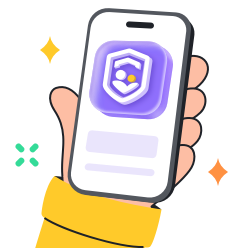The internet provides a gateway to information, entertainment, and social access. Meanwhile, it also presents such dangers as cyberbullying, inappropriate advertising, and the danger of strangers behind a screen. You need gadgets that can help you control your child’s internet usage. Chrome parental controls provide you with that assistance. They allow you to manage the rules and restrictions of some sites and monitor the web.
In this guide, you will find out the reasons why you need to implement controls, get acquainted with all the native tools of Chrome, understand how to enable the settings, which additional applications will add even more security, and find the answers to frequent queries in a short form. As a result, you will be in a position to have all that you require to keep your family safe online by the end.
Why do you need to set up parental controls on Chrome?
As the internet grows rapidly alongside a child’s developing mind, it brings both endless learning opportunities and serious risks. Without proper boundaries, children can easily stumble upon harmful content, whether it’s violent language, disturbing imagery, or misleading information. This is why parental controls on Chrome are essential. They are simply able to create a digital safety net, allowing children to explore while shielding them from exposure that could cause confusion, fear, or unhealthy behavior.
Unrestricted web access opens the door to online dangers like pop-up scams, malicious downloads, and predators lurking in chat or comment sections. Chrome’s parental controls offer proactive protection by filtering content, blocking suspicious sites, and managing which websites children can visit. These tools are basically able to help prevent harmful interactions before they occur, ensuring a more secure browsing experience.
Parental controls also allow families to manage screen time, promoting better sleep, reducing eye strain, and encouraging offline activities. Features like SafeSearch filter explicit media from search results, while weekly activity reports and real-time tracking help parents stay informed. Prioritizing educational content and limiting entertainment to suitable hours supports healthy digital habits. By using parental control tools like Chrome, families create a structured, age-appropriate online environment, which is essential for guiding children through today’s vast and unpredictable digital world.
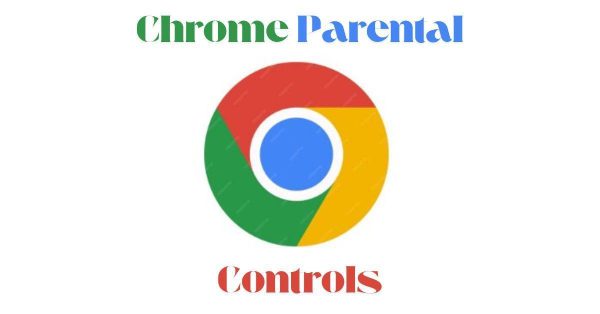


Through the prioritization of Chrome parental controls, you can create a safe and orderly online community. Personalization of such settings will protect your child against digital dangers, promote sensible routines, and help you breathe easier. They care less about them being able to safely explore the internet’s enormous potential.
Key features of Chrome parental controls
The following are some of the most important key features of Chrome safety controls:
1. Google Family Link
Parental controls built into Google Chrome are based on the use of Google Family Link. First, you need to install Family Link and link it to your child’s Google account. Open the child’s profile, navigate through the controls, then select Chrome and Web, and choose either to grant all websites, block explicit sites, or leave only approved sites. Specific URLs may be included in the block or approved list to perform a specific filtering.
2. Managing app permissions
Family Link also covers the policy of app permissions. Access to location, camera, and microphone can be easily disabled, preventing websites from accessing them. The installation of extensions may also be limited to prevent unvetted add-ons from appearing in the browser.
3. Setting screen time
Additional support for the safety package of Chrome includes screen time limits. The number of pages accessed on any given day is capped by limitations imposed on the device daily, and windows known as school time allow access to academic content but disable games. It features a so-called sleeping mode, which blocks the browser completely when it’s bedtime or family time. Any schedule can easily accommodate changing routines.
4. Monitoring activity
The tracking is performed through electronic mail or notification. Such summaries include popular visited sites, browsing time, and permission requests instituted through Chrome. Parents can identify trends with clear data and make setting adjustments without constantly monitoring the device.
5. Manage your child’s access with Chrome
Chrome parental controls allow you to specify exactly which websites children can visit on their ChromeOS or Android devices. You choose to allow only approved domains or instantly block harmful ones. These controls run via Family Link, providing oversight and flexibility, allowing kids to explore safely while you retain control over their browsing.
6. Safe search filter
SafeSearch filters explicit images and videos from Google search results by default for signed-in children under 13 or the applicable age. Turning it on blocks adult content like pornography and violent media. Parents can lock SafeSearch settings or disable Search entirely to prevent accidental exposure, ensuring cleaner, kid-friendly searches every time.
7. Let your child access Google Assistant through a controlled account
With a Family Link-managed account, children sign into ChromeOS or Android devices and access Google Assistant through their own profile. They enjoy games, stories, and activities designed for families, while being blocked from purchases or transactions. Parents control third-party integrations and review permitted experiences, keeping voice interactions safe and age-appropriate.
These features support a safer online experience by guiding what content children can access and how long they spend online. Limiting certain permissions and setting clear boundaries helps promote responsible digital habits. Activity monitoring allows parents to stay informed and make thoughtful adjustments as needed.
Ensure a safe online environment with FlashGet Kids
How to set up parental controls on Chrome
Setting up Chrome parental controls and guidelines is essential, especially if you have younger children. It is also very easy to switch it on and set up properly. All you need to do is pay attention and follow the tips below:
Step 1. First, install Google Family Link on your phone from the Play Store or App Store. Open the app and sign in with a Google account. Follow prompts to create a new child profile.
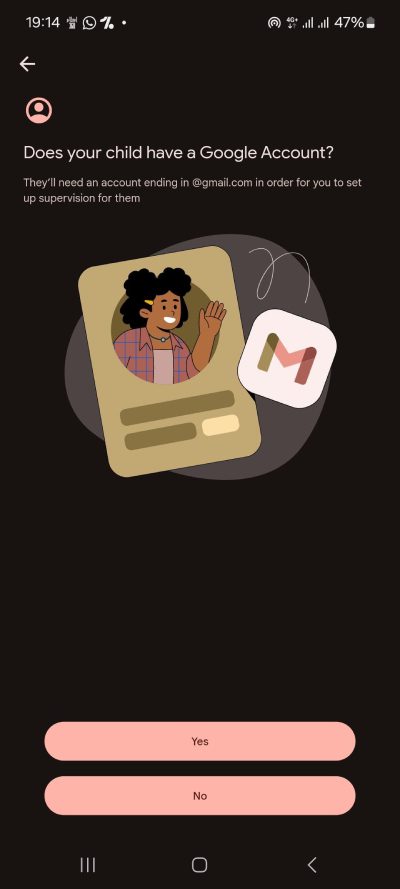


Or link an existing Google account and tap ‘Done’ to add your Child’s device. Complete age verification and grant consent if required.
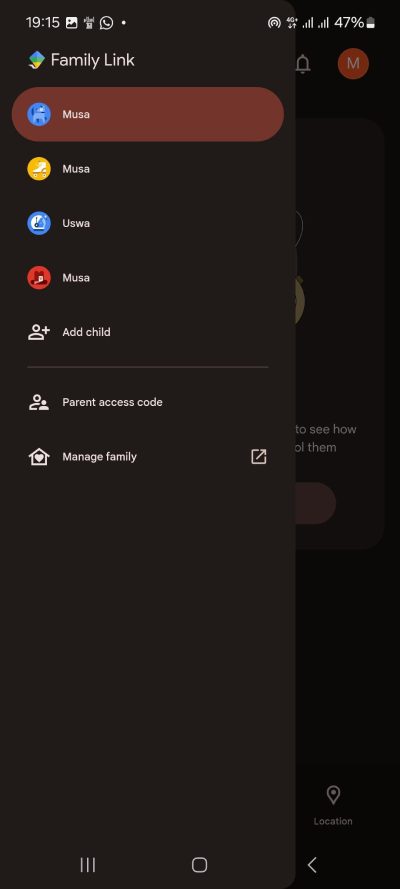


Step 2. Next, open Family Link on the child’s device. On Android, install the Family Link for Children & Teens app.
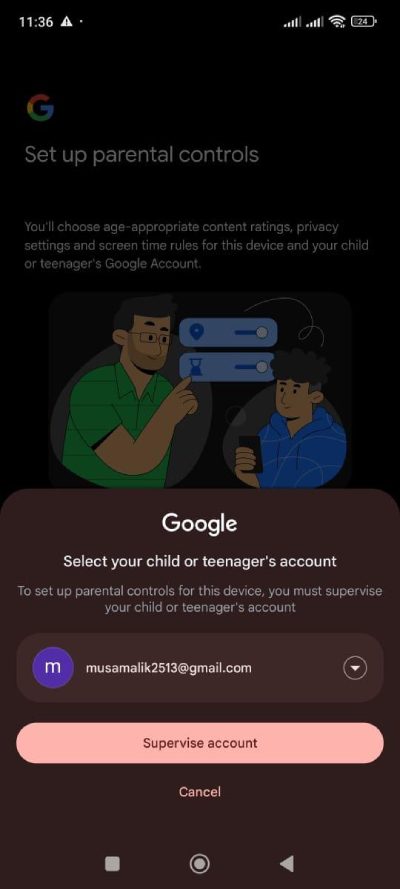


On a Chromebook, create a supervised account by navigating to Settings > People > Add Person. Sign in with the child’s Google credentials. The apps link automatically and confirm connection with a prompt.
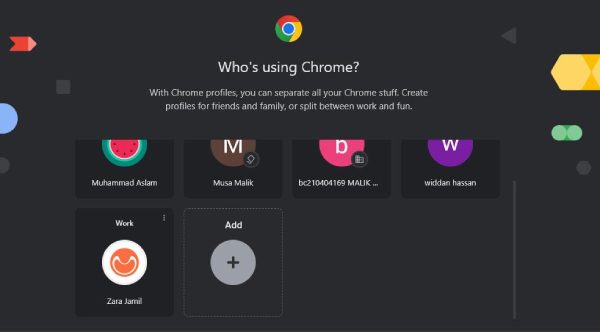


Step 3. After linking, return to Family Link on the parent’s device. Tap the child’s profile, then Controls. Select Chrome and Web.
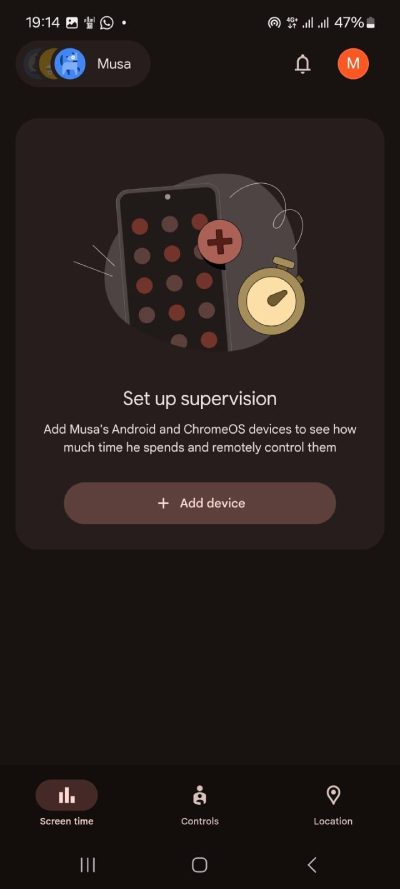


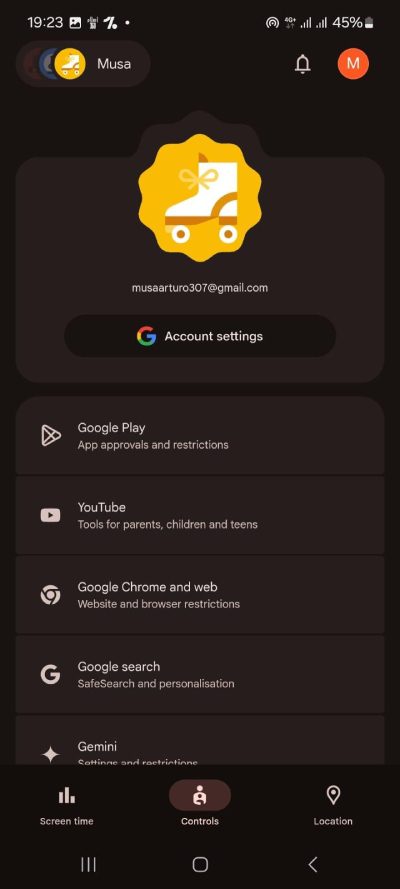


Three filter options appear: Allow all sites, try to block explicit sites, and only allow approved sites. Select the level that corresponds to the child’s age and maturity. Changes apply immediately.
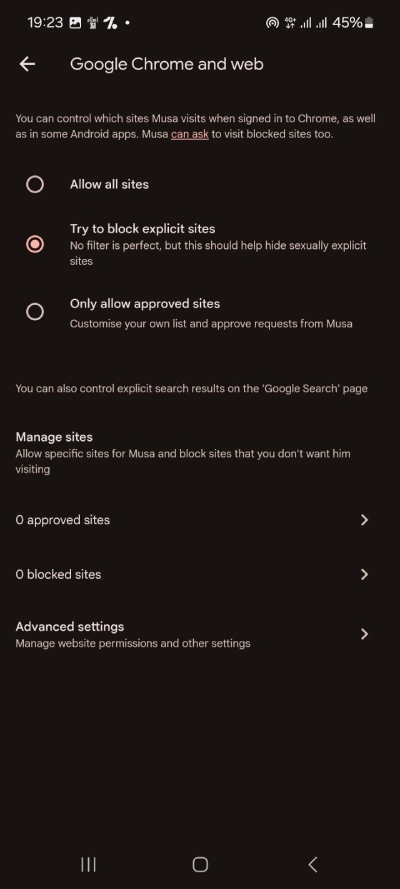


Step 4. To fine-tune browsing, tap Manage Sites. Select Approved Sites to add safe URLs one by one. Choose Blocked Sites to enter full domains or specific pages. Save each entry, and Chrome updates in real time.
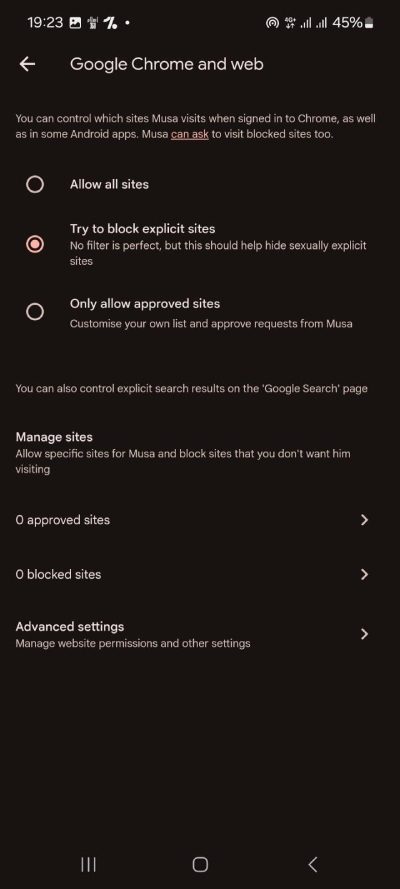


Step 5. Finally, tap Advanced Settings under Chrome controls. Toggle Site Permissions to block access to location, camera, and microphone. Disable Extensions to stop new add-ons. Review these settings regularly and adjust as the child grows. This setup ensures a tailored, secure browsing environment with clear rules and responsive controls.
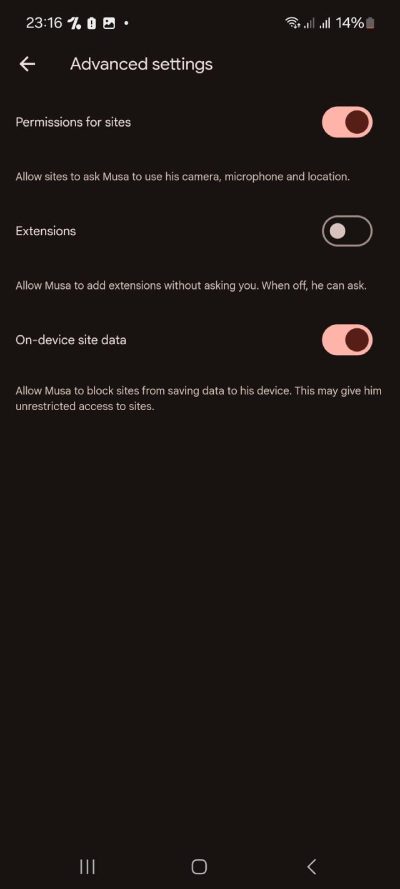


Tips for customizing controls
It is the responsibility of parents to regulate filters according to their child’s age. For toddlers, only approved sites should be allowed, and educational URLs should be added. For school-age children, consider blocking content and making additions or deletions to specific domains. Teenagers are the beneficiaries of allowing all sites with manually blocked domains. Adjust the settings systematically as maturity comes up.
Enhancing parental controls with additional tools
Third-party parental control applications may also prove useful at times. These extensions may become a solution to address the security and safety issues you have been experiencing with your children. The primary effect of parental control extensions or tools is to create a barrier between children using the internet and the harmful content online. They also provide internet filtering, screen time restrictions, and control over permissions. This also excludes explicit websites, unsuitable advertisements, and situations where unauthorized downloading of information is possible. Add-on security provided by third-party extensions goes an extra step by monitoring in real-time, providing detailed reports, and automatic scheduling to suit personalized requirements.
The most trusted and reliable parental control tool available is FlashGet Kids. It features easy integration with Chrome, establishing a safe and child-friendly browser environment. It prevents a wide variety of advertising formats and blocks social media based on predetermined age levels.



The features of FlashGet Kids:
- Live viewing sessions and real-time alerts check for any crossing of restricted-content boundaries.
- Application restrictions enforce download limitations to prevent unwanted installs.
- Live monitoring observes, detects, and records everything that occurs on the device in real-time.
- Remote camera streams video of the device’s surroundings for live observation.
- One-way audio captures ambient sound without disrupting anyone nearby.
- Screen mirroring provides real-time screen captures at freely configurable intervals.
- Notifications tracker aggregates social media and messaging alerts into a single stream.
- The location tracker provides real-time GPS updates on a moving map.
- Location history records visited places in a timeline format.
- A geofence establishes safe zones and issues alarms if the boundaries are trespassed.
- Content filtering creates custom rules to block specific websites or keywords.
- App blocker prevents the downloading of apps and enforces time-based usage limits.
- Screen time is limited during school hours and bedtime.
- All data is end-to-end encrypted and accessible through a unified dashboard.
FAQs
Can I block YouTube or Roblox on Chrome?
Yes. Use the Blocked sites section in Family Link to enter full URLs for YouTube or Roblox. Chrome will then refuse to load those domains on the supervised profile. This effectively prevents access to both platforms, maintaining adherence to parental guidelines and restricting unwanted online content in the child’s browsing session.
Can Chrome block inappropriate ads?
Partial blocking comes through the “Try to block explicit sites” filter. It basically helps to remove obvious adult ads, but not all ad types. You can add an ad-blocking extension, such as those approved by the Chrome Web Store, or use a third-party tool like FlashGet Kids for more stringent ad filters.
Do parental controls work when offline?
No. Chrome filters and Family Link settings require an internet connection. If the device goes offline, supervised browsing rules pause until it reconnects. You get no updates or enforcement until Chrome syncs again.
Conclusion
When you set up Chrome parental controls, you provide your family members with a secure Online environment. You dictate what your kid can see, when they can browse, and which applications they can utilize. Start by connecting your account with Google Family Link, then choose filters, control sites, and set restrictions. You can further increase security by using other third-party applications, such as FlashGet Kids. With these devices, you exclude dangerous content, advertisements, and unknown people.
You also model good technology behaviors that have explicit boundaries and time restraints on device use. Protecting your online kid should not seem like a burden. Chrome parental control and the correct extensions help you take charge of your child’s digital life with confidence and care.

